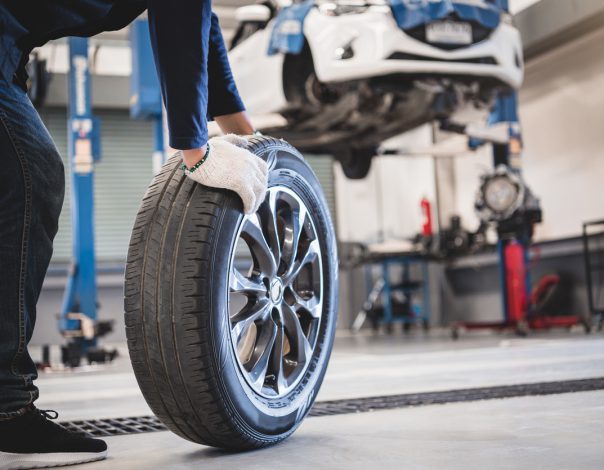How to Know When to Replace Tires?
Tires are a key component of your vehicle’s safety, performance, and fuel efficiency. When they’re worn out or damaged, they can put you at greater risk for accidents, lessen your traction, and even lead to expensive repairs. That’s why it’s so important to know when it’s time to replace your tires to keep your driving experience smooth and safe. In this blog, the experts at GT Radial will share some critical signs that it’s time for new tires and offer tips on making them last longer.
Different Types of Tires and Their Lifespan
The type of tires you use also affects how often they need to be replaced. For example:
- All-season tires tend to last longer than performance tires, which are built for speed and agility but wear out more quickly
- Winter tires, designed for enhanced traction in snow and ice, may require more frequent replacement if used year-round
Understanding the specific requirements of your tire type can help you better plan for replacement.
Signs It’s Time to Replace Your Tires
Tread Depth
Tread depth is one of the most critical indicators of tire health. Tires rely on their tread to maintain traction, especially in wet or slippery conditions. Your ability to stop quickly or maintain control on the road decreases as the tread wears down.
A simple way to check tread depth is by using the penny test: insert a penny into the tire’s tread with Lincoln’s head facing down. If you can see the top of Lincoln’s head, it’s time to replace the tire, as it indicates the tread depth is below the recommended 2/32-inch limit.
Cracks or Bulges
As tires age or endure rough road conditions, they can develop visible cracks, especially in the sidewalls. Bulges or blisters can also appear, signaling a structural issue within the tire. These deformations can lead to blowouts, which can be extremely dangerous, especially at high speeds. If you notice any cracks or bulges in your tires, it’s time to replace your tires immediately.
Vibration While Driving
Unusual vibrations while driving may indicate that your tires are unevenly worn or that there’s an alignment issue. While some level of vibration is normal on rough roads, excessive or persistent vibrations could mean your tires are damaged, unbalanced, or not appropriately mounted. It’s essential to have them inspected by a professional to determine if replacement is necessary.
Age of Tires
Even if your tires look okay, age can determine whether they need to be replaced. Tires naturally degrade over time, and most experts recommend replacing them every 6 to 10 years, regardless of their appearance. You can check the age of your tires by looking at the Tire Identification Number (TIN) on the sidewall. The last four digits of this number indicate the week and year the tire was manufactured.
How to Extend the Life of Your Tires
Let’s go over our top tips for extending the life of your tires:
- Rotating your tires every 5,000 to 8,000 miles is recommended to ensure even wear across all four tires. Regular tire rotation helps balance the wear between front and rear tires, extending their lifespan and improving your vehicle’s handling.
- Under-inflated or over-inflated tires wear unevenly and are more prone to damage. Check your tire pressure regularly, ideally once a month, and adjust the pressure according to your vehicle’s manufacturer’s recommendations. Properly inflated tires not only last longer but also improve fuel efficiency.
- Misaligned wheels can cause uneven tire wear and affect your car’s handling. You may need a wheel alignment if you notice your vehicle pulling to one side or your steering wheel is off-center. Properly aligning your wheels ensures that your tires wear evenly and last longer.
Stay on Top of Your Tires. GT Radial Can Help.
Your tires are the only connection between your vehicle and the road, so keeping them in great shape is imperative. Regular inspections and maintenance can help you avoid unexpected problems and ensure your tires are performing at their best.
If you’ve spotted any signs that your tires might need replacing, don’t hesitate! You can visit a trusted tire service provider or check out our selection of high-quality tires on the GT Radial website to find the perfect fit for your vehicle.


